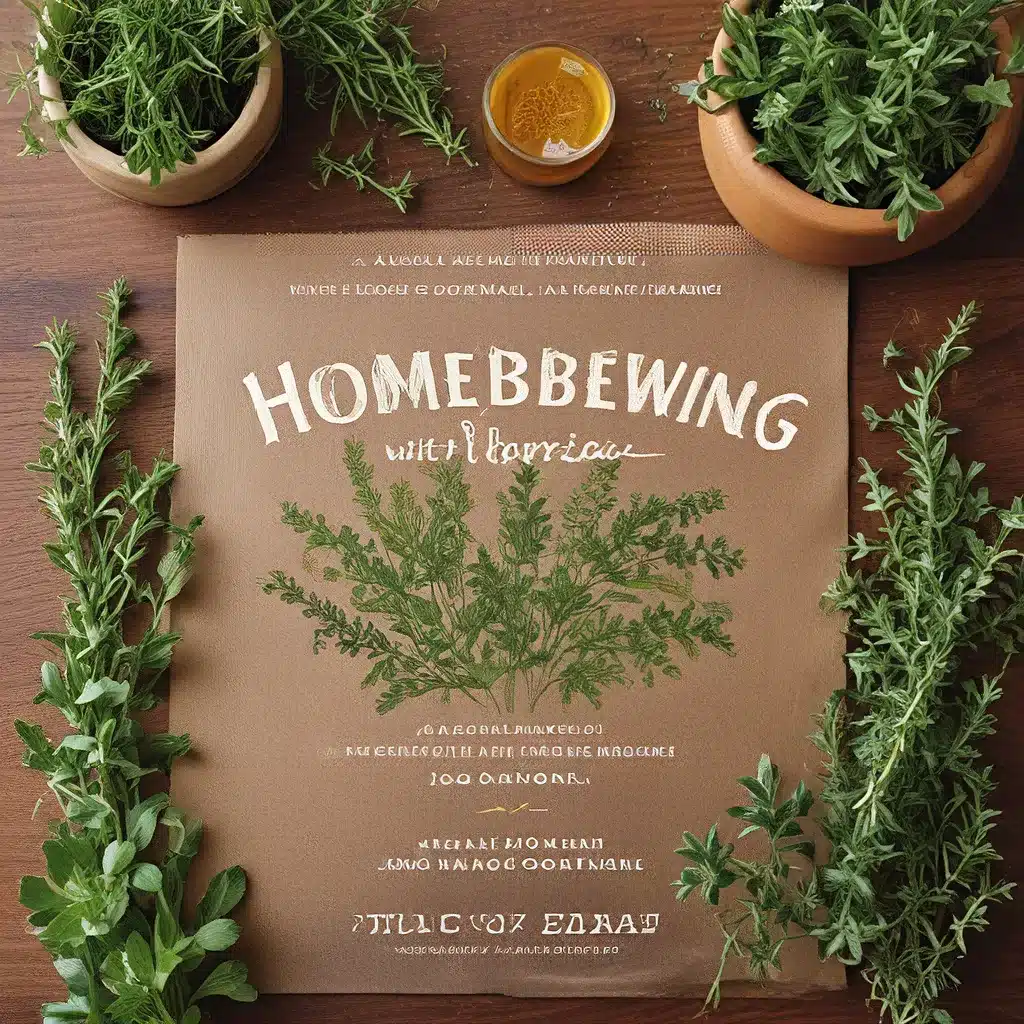
Unleashing the Magic of Herbal Homebrewing
People who have never homebrewed always ask me, “Why bother when there are so many amazing craft beers out there?” Well, my friends, nothing beats savoring a glass of beer that I brewed myself. Plus, homebrewing ensures I’ll always have access to my favorite styles, brewed just the way I like them.
One of my most cherished hobbies is experimenting with herbal and botanical additions to my homebrews. From the earthy richness of grains of paradise in a rustic saison to the floral pop of chamomile in a Belgian witbier, these natural ingredients can transform a beer into a truly unique and captivating experience. And let’s not forget the kick of birds-eye chilies and cacao nibs in a rich stout – now that’s a flavor explosion worth celebrating!
But my personal favorite herbal style to play with is the gruit. Pronounced “grooĭt,” a gruit is a beer that uses an herbal mixture as the primary bittering and flavoring agent. It’s often considered an ancient style, as herbal concoctions were used to bitter beers long before the widespread use of hops in the 15th and 16th centuries. While a true gruit doesn’t contain any hops, I’ve added a small amount of Fuggle hops to my recipe for their preservative qualities, ensuring they don’t dominate the overall flavor profile.
Crafting the Perfect Herbal Brew
The inspiration for my Deep Roots Gruit recipe came to me while sipping a cup of our herbal coffee. Its rich, earthy, and smooth roasted flavor was begging to be added to a beer. Mugwort and yarrow are both traditional gruit herbs that I knew I wanted to include.
I used the mugwort in the boil to impart an earthy bitterness, and the yarrow at flameout to add a more complex bitterness and a spicy, sage-like aromatic note. The herbal coffee and chaga mushroom extract provide additional layers of complexity and a slightly herbal-roast character. The final product is a highly quaffable beer akin to an English porter, with a depth of flavor that will have your taste buds dancing.
If you’re an experienced homebrewer, feel free to skip ahead to the recipe. But if you’re new to the world of homebrewing, I highly recommend doing some homework before firing up your kettle for the first time. Cleaning and sanitizing your equipment is key to ensuring a delicious brew. Otherwise, there’s a high risk that other microorganisms will outcompete the pitched yeast, resulting in undesirable qualities or off-flavors in the beer.
Herbal Homebrewing: A Step-by-Step Guide
Ingredients:
- 5 gallons (18.9 L) of wort
- Estimated Original Gravity: 1.070
Timeline for Herbal Additions to the Boil:
– 60 minutes
– 20 minutes
– 10 minutes
– Flameout
Directions:
Now comes the hardest part of homebrewing – waiting for the batch to ferment. If you have a prior batch in reserve, kick back and enjoy one. You’ve earned it! If not, I suggest a nice cup of organic tea while you patiently wait.
The key to success in herbal homebrewing is finding the right balance of flavors. You want the herbs and botanicals to complement the malt and yeast character, not overpower them. It’s a delicate dance, but with a little experimentation, you’ll be crafting complex and captivating beers that will have your friends and family in awe.
One of my favorite resources for inspiration is the book “Sacred and Herbal Healing Beers”. It contains 120 recipes for ancient and indigenous beers and meads from 31 countries and six continents. Talk about a global flavor adventure!
So, whether you’re an experienced homebrewer or just starting your journey, I encourage you to embrace the world of herbal and botanical additions. Who knows, you might just stumble upon the next great craft beer sensation – or at the very least, have a lot of fun (and tasty) experiments along the way.
Conclusion: Embracing the Herbal Revolution
Homebrewing with herbs and botanicals is a surefire way to add a unique and captivating twist to your beer creations. From the earthy complexity of mugwort and yarrow to the floral notes of chamomile and the fiery kick of birds-eye chilies, the possibilities are endless.
As a certified BJCP judge and longtime homebrewer, I can attest to the joys of experimenting with these natural ingredients. It’s a journey of discovery that never fails to surprise and delight. So, what are you waiting for? Grab your brewpot, gather your favorite herbs and spices, and let’s embark on a flavorful adventure together.
Who knows, you might just uncover the next great herbal beer style that will have the craft beer world buzzing. Cheers to the herbal revolution!

